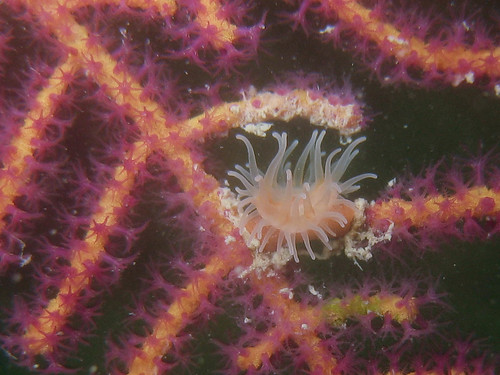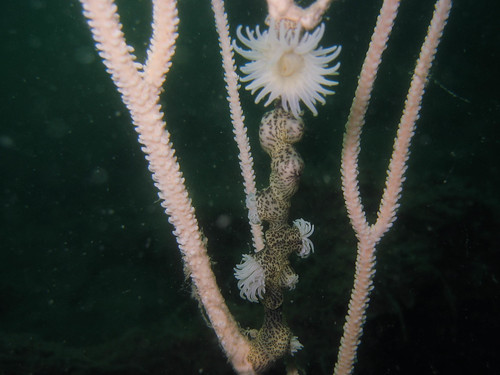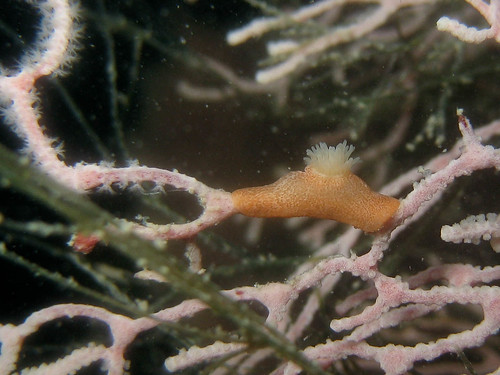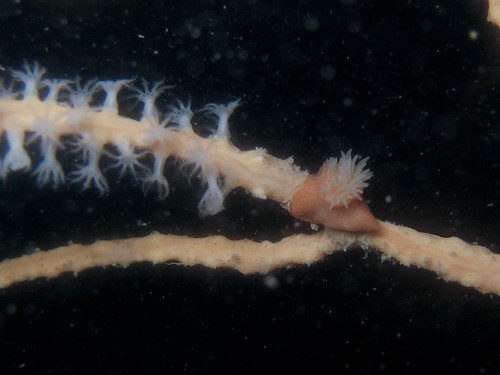All That Wrapper
 December 27, 2016
December 27, 2016
Wrappers are pretty – that’s the idea. They are intended to attract, mesmerise, and evoke a sense of allure. But once we are done with them, we crush them up and toss them aside. In spite of its evocative potential, a pretty piece of wrapper, is alas, benign. But not these. These are wrappers of gorgonians, and a predator that sits atop another predator, is far from benign.
Gorgonians are those stringy, branching, fan-like coral found on reefs or the sandy sea floor. The branches are completely covered in dainty polyps, each armed with 8 tentacles for catching plankton food. Along comes a wrapper anemone (Nemanthus sp.). Pretty as it is, it is much bigger than the gorgonians’ tiny polyps, and it doesn’t have any plans to unwrap itself.
Not much is known about wrapper anemones, but it is believed that they reproduce by fission or budding – one anemone becomes two, two into four – until the entire gorgonian is smothered with wrapper anemones. Imagine what this means for the host gorgonian. The anemone’s very presence on the gorgonian means the gorgonian has lost some ability to feed. As the anemones increase their strength, slowly, slowly, the gorgonian loses more opportunity to feed, until it eventually is reduced to a hollow skeleton. If the gorgonian is lucky, a decorator crab might come around to pluck some anemone off to be placed on the crab’s carapace. That being said, budding and fission is a really efficient means of reproduction and a crab would have to pluck many anemones off the gorgonian to have any noticeable impact.
The prettiness of this relationship gives the illusion that anemone and gorgonian are just caught up in friendly commensalism; but now you know, here’s a wrapper that has no plans of becoming undone. Happy Holidays!




 Posted in
Posted in 



 content rss
content rss
COMMENTS